The Annapurna Base Camp Trek offers a remarkable journey through some of the world’s most captivating landscapes, featuring lush rhododendron forests and towering peaks like Annapurna and Machhapuchhre. Spanning 10-12 days, this trek begins in Nayapul and winds through charming villages such as Ghandruk and Chhomrong, each rich in local culture. While the trek provides stunning views and unique experiences, it also presents challenges, including high altitudes and variable terrain. Understanding these elements can significantly enhance one’s adventure, but the preparation and insights needed for success are equally crucial. What might those entail?
Good To Know
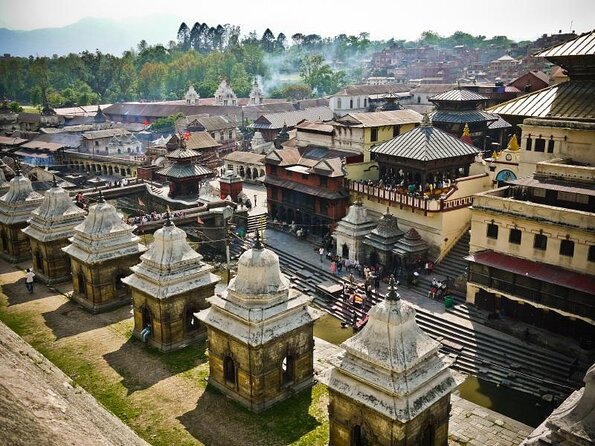
- The Annapurna Base Camp Trek typically lasts 10-12 days, starting from Nayapul and traversing through picturesque villages and stunning landscapes.
- Trekkers experience breathtaking views of Annapurna and Machhapuchhre peaks, alongside vibrant rhododendron forests and terraced farmlands.
- Proper preparation is essential, including physical fitness, appropriate gear, and understanding the challenges of high altitude and slippery paths.
- Packages usually include accommodation, meals, and transportation, ensuring a hassle-free trekking experience from Kathmandu to Pokhara and back.
- Engaging local guides enhances cultural insights and safety, while acclimatization helps prevent altitude sickness during the trek.
Overview of the Trek
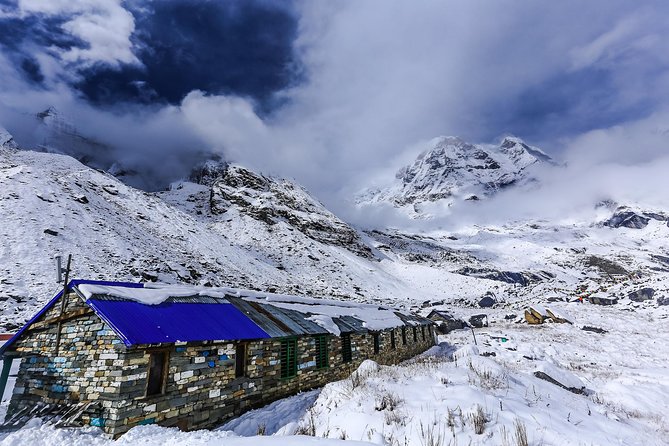
What makes the Annapurna Base Camp Trek a must-do for adventure seekers? This trek, often called the Annapurna Sanctuary trek, ranks among the world’s best trekking routes.
It offers stunning views of towering peaks, lush terraced farmlands, vibrant rhododendron forests, and captivating waterfalls. Following the Annapurna Sanctuary river basin, trekkers navigate deep gorges and glacial valleys, providing a unique experience with nature.
The trek typically lasts 10-12 days, starting from Nayapul and passing through charming villages like Tikhedhunga, Ghorepani, and Chhomrong, each with its own cultural charm.
While the trek presents challenges, including slippery paths and high altitudes, the breathtaking scenery and sense of accomplishment make every step worthwhile for those seeking adventure in the Himalayas.
You can also read our reviews of more tours and experiences in Kathmandu.
Detailed Itinerary
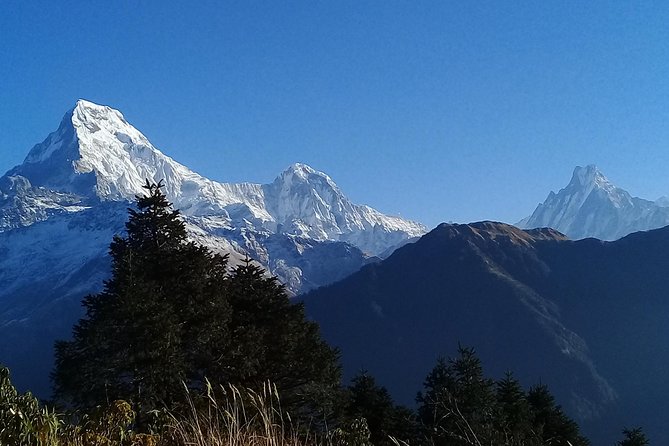
The Annapurna Base Camp Trek offers a well-structured itinerary that guides trekkers through some of the most stunning landscapes in the Himalayas.
Over 12 days, adventurers begin in Kathmandu and fly to Pokhara, then trek through picturesque villages like Ghandruk and Chhomrong. Each day unfolds new breathtaking views, with key stops at Bamboo and Deurali.
On Day 6, trekkers reach Annapurna Base Camp, soaking in the majestic mountain scenery. The return journey includes a relaxing stop at Jhinu Danda’s hot springs.
The trek concludes with a flight back to Kathmandu, allowing for exploration of UNESCO World Heritage sites.
This itinerary balances challenge and discovery, promising an unforgettable Himalayan experience.
Inclusions and Logistics
For trekkers embarking on the Annapurna Base Camp journey, a comprehensive range of inclusions and logistics ensures a smooth and enjoyable experience.
The trek package typically covers essential elements that facilitate hassle-free travel. Here are three key inclusions:
-
Accommodation: Trekkers enjoy comfortable stays in guest houses along the route, ensuring a cozy retreat after a day of adventure.
-
Meals: Breakfast, lunch, dinner, tea, and coffee are provided during the trek, allowing trekkers to savor local cuisine without worrying about meal prep.
-
Transportation: The package includes airport pickups, domestic flights, and local transport, streamlining the travel process from Kathmandu to Pokhara and beyond.
With these inclusions, trekkers can focus on the breathtaking scenery and memorable experiences awaiting them on their journey.
Preparation Guidelines
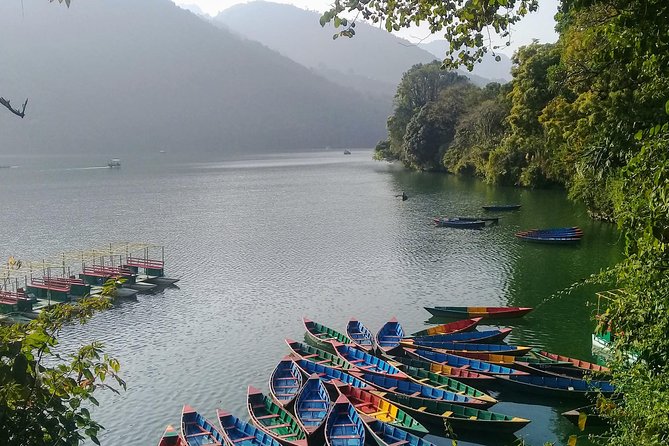
Preparing for the Annapurna Base Camp trek requires careful planning to ensure trekkers are ready for the challenges ahead.
First, they should invest in proper gear, including a warm down jacket, sleeping bag, and sturdy trekking boots. A valid passport is necessary for booking and travel.
It’s essential to stay physically fit by engaging in regular cardio and strength training exercises before the trek. Trekkers should also familiarize themselves with the itinerary and altitude changes to better prepare for the elevation.
Plus, they should pack personal items wisely, considering the weather conditions. Lastly, securing travel insurance that covers trekking activities will provide peace of mind during the journey.
With proper preparation, trekkers can fully enjoy the stunning vistas and rich culture along the route.
Trekking Challenges
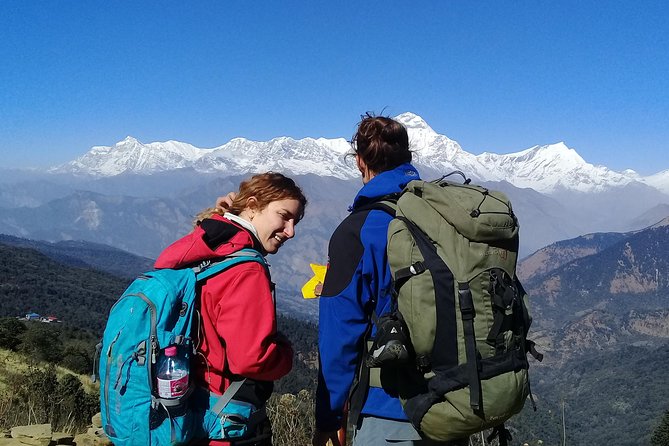
Navigating the Annapurna Base Camp trek presents several challenges that trekkers must be prepared for. Understanding these obstacles can enhance their trekking experience.
Here are three key challenges:
-
High Altitude: Trekkers often face altitude sickness due to the rapid ascent to over 4,130 meters (13,545 feet). Acclimatization is crucial.
-
Slippery Paths: The trek includes steep and sometimes muddy trails, especially during the rainy season. Proper footwear is essential to prevent slips and falls.
-
Variable Weather: Weather can change quickly in the Himalayas, with cold temperatures and rain or snow possible at any time. Layered clothing helps manage temperature fluctuations.
Scenic Highlights
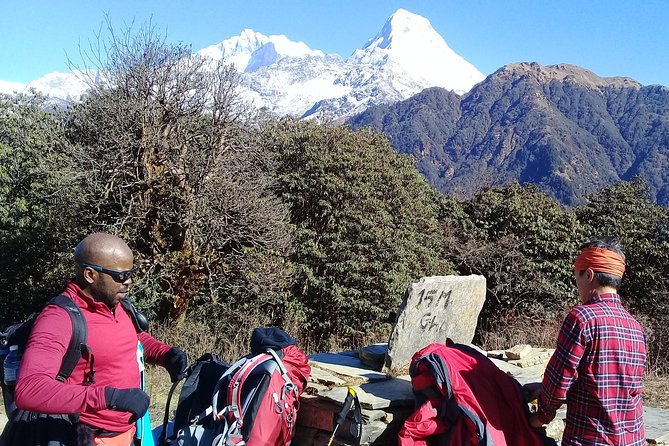
Despite the challenges trekkers face, the scenic highlights of the Annapurna Base Camp trek make every effort worthwhile.
This trek unveils breathtaking views of towering peaks, including the majestic Annapurna and Machhapuchhre. As trekkers traverse lush rhododendron forests, they encounter vibrant blooms in spring, adding splashes of color to the landscape.
Ethnic villages dot the route, showcasing traditional architecture and local culture, while terraced farmlands reveal the region’s agricultural heritage. The sound of cascading waterfalls and the serene Annapurna Sanctuary river basin further enhance the trek’s beauty.
Notably, the panoramic views from vantage points like Poon Hill leave lasting impressions, solidifying the trek as a must-do for nature enthusiasts and adventure seekers alike.
Customer Experiences
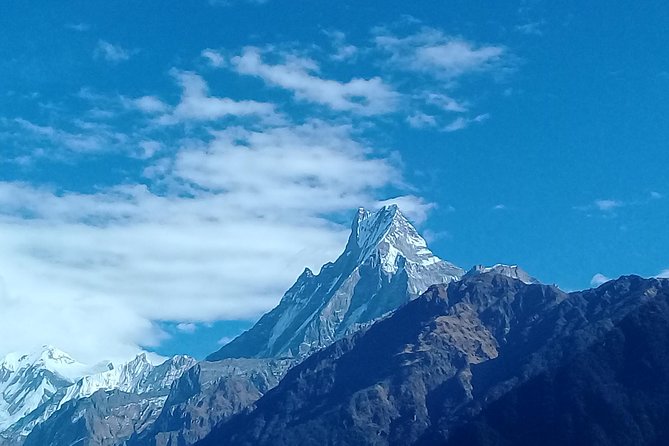
Drawing on their unforgettable adventures, trekkers often share their experiences of the Annapurna Base Camp trek with enthusiasm.
They highlight several aspects that made the journey memorable:
-
Breathtaking Scenery: Trekkers rave about the stunning mountain views and diverse landscapes, from lush rhododendron forests to rugged glacier valleys.
-
Cultural Encounters: Many appreciate the opportunity to interact with local communities, enjoying authentic cuisine and learning about the rich traditions of the region.
-
Supportive Guides: Reviewers frequently commend their knowledgeable guides, noting how their expertise enhanced the trekking experience and ensured safety.
Travel Tips and Recommendations
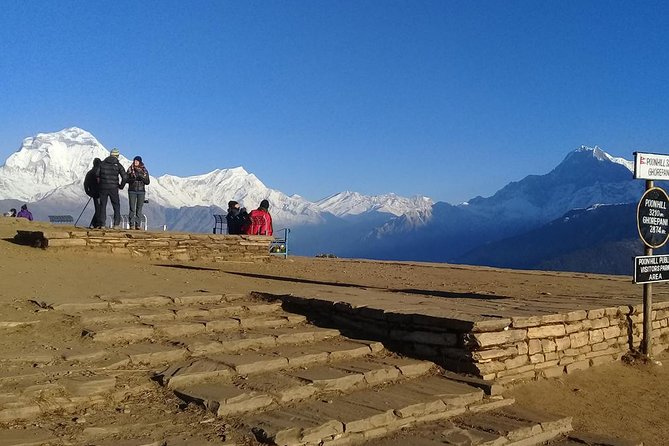
Trekking to Annapurna Base Camp requires careful preparation and a few essential tips to ensure a smooth journey.
First, acclimatization is crucial; trekkers should ascend gradually to prevent altitude sickness. Packing the right gear, including warm clothing and sturdy boots, can significantly impact comfort.
Staying hydrated and maintaining energy levels with snacks is also important. Trekkers should embrace flexibility in their itinerary, as weather conditions may cause delays.
Engaging with local guides enhances the experience, providing insights into culture and safety. Plus, travelers should carry cash, as ATMs are scarce in remote areas.
Lastly, capturing moments through photography is encouraged, but trekkers should remain respectful of the environment and local customs.
Frequently Asked Questions
What Is the Best Time to Trek to Annapurna Base Camp?
The best time for trekking generally falls between September to November and March to May. During these months, trekkers enjoy stable weather, clearer skies, and stunning views, making their experience memorable and enjoyable.
Are There Any Age Restrictions for Participants?
There aren’t strict age restrictions for participants, but it’s advisable that trekkers be in good health and possess a reasonable fitness level. Younger and older individuals should consult a physician before undertaking strenuous treks.
How Can I Stay Connected With Family While Trekking?
To stay connected with family while trekking, he can use a portable charger, local SIM cards for mobile data, and messaging apps. Regular check-ins through these methods will keep everyone informed and reassured.
What Type of Food Is Available During the Trek?
During the trek, trekkers enjoy a variety of foods, including local Nepali dishes like dal bhat, as well as international options such as pasta and pancakes. Meals cater to different dietary preferences, ensuring everyone’s satisfied.
Is Travel Insurance Recommended for This Trek?
Travel insurance’s highly recommended for treks like this. It protects against unexpected events, covering medical emergencies, trip cancellations, and lost gear. Many trekkers find peace of mind in having coverage for unforeseen challenges during their adventures.
The Sum Up
The Annapurna Base Camp Trek stands out as an unforgettable adventure for nature lovers and thrill-seekers alike. With its stunning landscapes, rich cultural encounters, and the thrill of reaching high altitudes, trekkers often leave with memories to cherish for a lifetime. Proper preparation and awareness of challenges can enhance the experience, making it not just a trek, but a journey of personal growth and discovery. For those seeking an adventure, the Annapurna Base Camp awaits!
More Hiking & Trekking Tours in Kathmandu
More Tour Reviews in Kathmandu
Not for you? Here's more nearby things to do in Kathmandu we have reviewed
- From Lukla: Everest Base Camp (EBC) 10-Day Trek
- Kathmandu : Everest Mountain Flight – with Private Transfers
- Full Day : Kathmandu Sightseeing By Bus Day Trip
- Kathmandu: 7 UNESCO World Heritage Sites Day Tour
- Kathmandu: 8-Day Langtang Valley Trek with Transfers
- Thamel Rickshaw Tour
- Everest View Motorbike Tour- 6 Days
- Kathmandu: Top 4 UNESCO Sites Private/Group Tour with Lunch
- From Oceans to Mountains-9 Days (Nepal Guided Tour)
- From Kathmandu: Everest Base Camp Helicopter Tour landings
- Kathmandu: Food and Drink Walking Tour
- Life and spirituality tour of Kathmandu
